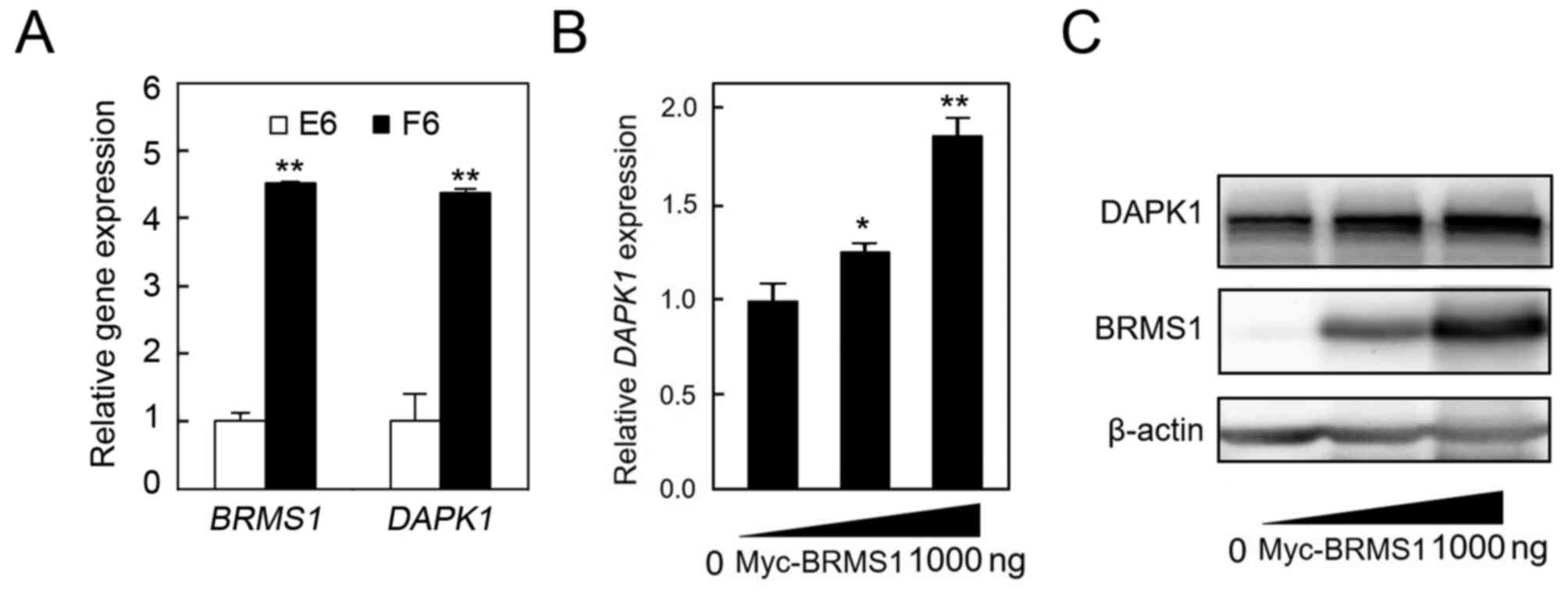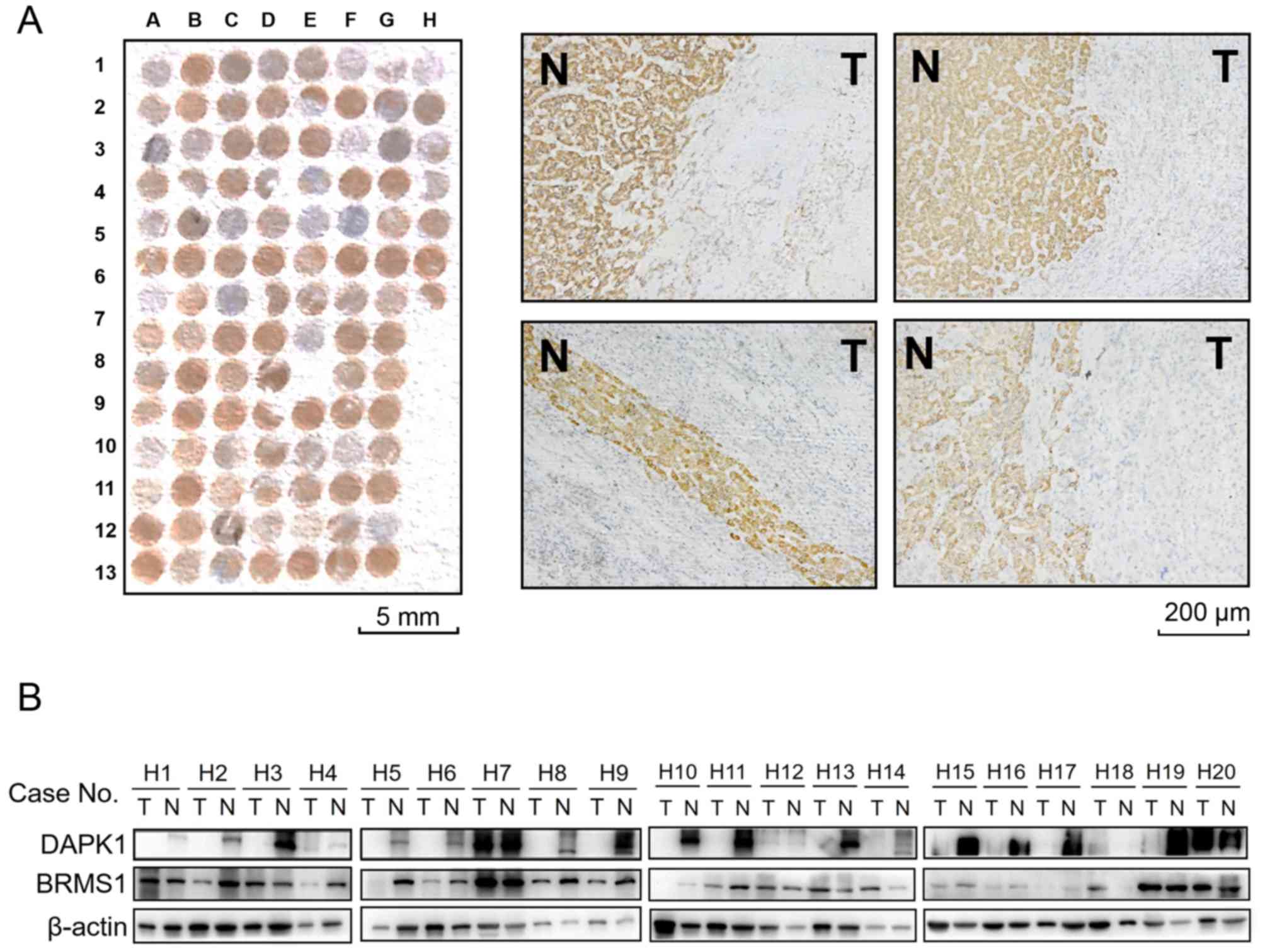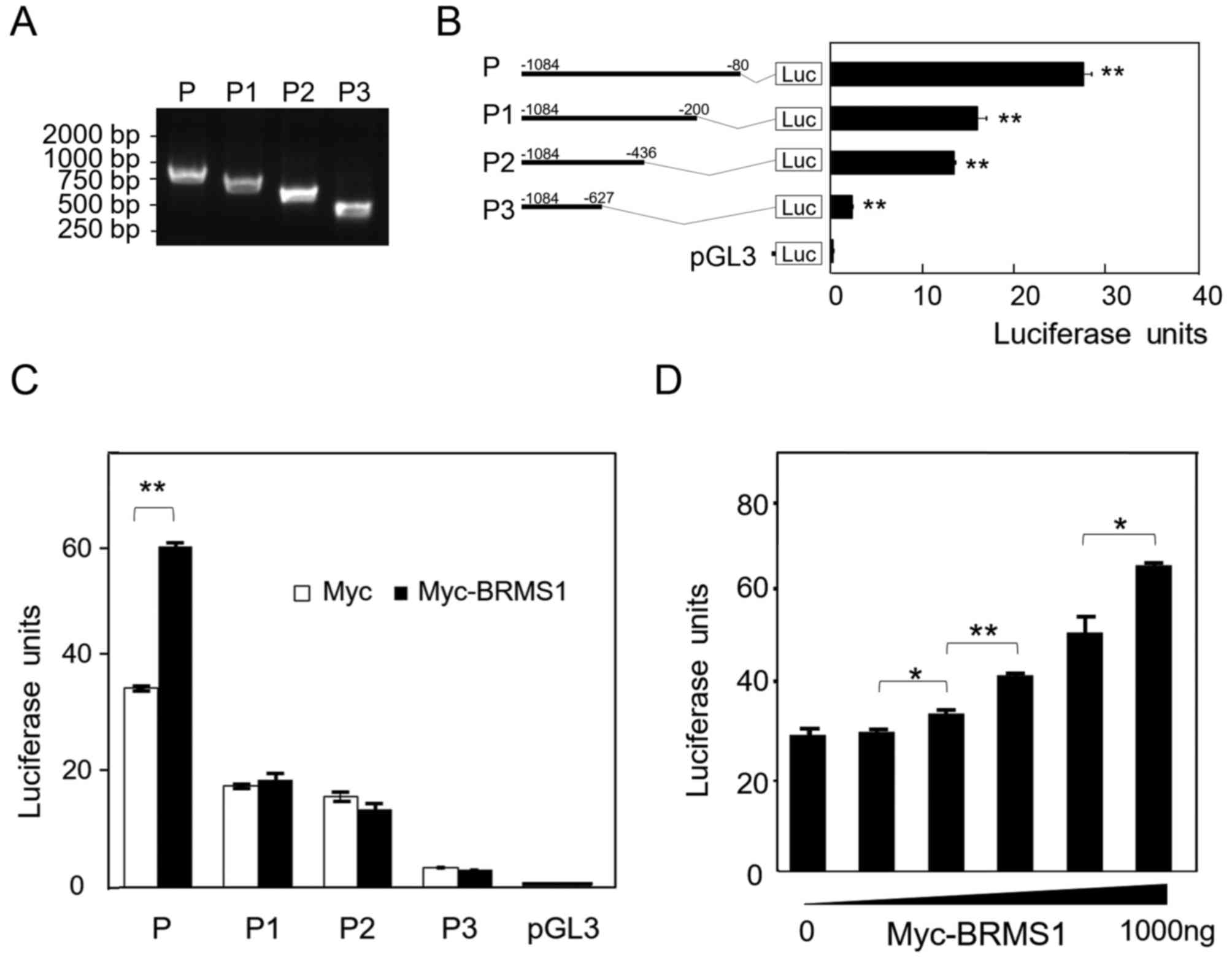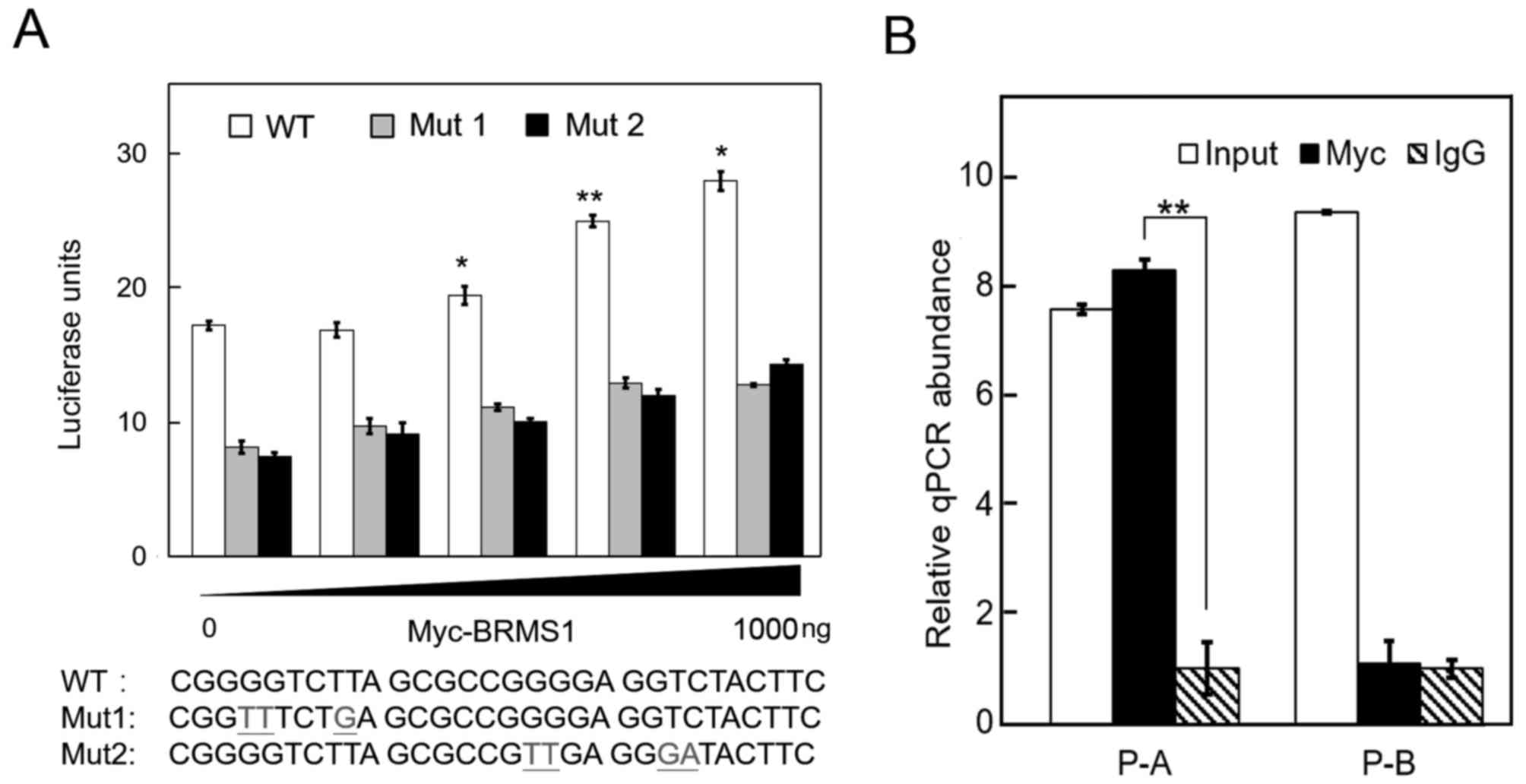|
1
|
Tang Z-Y, Ye S-L, Liu Y-K, Qin LX, Sun HC,
Ye QH, Wang L, Zhou J, Qiu SJ, Li Y, et al: A decade's studies on
metastasis of hepatocellular carcinoma. J Cancer Res Clin Oncol.
130:187–196. 2004. View Article : Google Scholar
|
|
2
|
Fidler IJ: The pathogenesis of cancer
metastasis: The 'seed and soil' hypothesis revisited. Nat Rev
Cancer. 3:453–458. 2003. View
Article : Google Scholar : PubMed/NCBI
|
|
3
|
Seraj MJ, Samant RS, Verderame MF and
Welch DR: Functional evidence for a novel human breast carcinoma
metastasis suppressor, BRMS1, encoded at chromosome 11q13. Cancer
Res. 60:2764–2769. 2000.PubMed/NCBI
|
|
4
|
Shevde LA, Samant RS, Goldberg SF,
Sikaneta T, Alessandrini A, Donahue HJ, Mauger DT and Welch DR:
Suppression of human melanoma metastasis by the metastasis
suppressor gene, BRMS1. Exp Cell Res. 273:229–239. 2002. View Article : Google Scholar : PubMed/NCBI
|
|
5
|
Smith PW, Liu Y, Siefert SA, Moskaluk CA,
Petroni GR and Jones DR: Breast cancer metastasis suppressor 1
(BRMS1) suppresses metastasis and correlates with improved patient
survival in non-small cell lung cancer. Cancer Lett. 276:196–203.
2009. View Article : Google Scholar
|
|
6
|
Nagji AS, Liu Y, Stelow EB, Stukenborg GJ
and Jones DR: BRMS1 transcriptional repression correlates with CpG
island methylation and advanced pathological stage in non-small
cell lung cancer. J Pathol. 221:229–237. 2010. View Article : Google Scholar : PubMed/NCBI
|
|
7
|
Li J, Cheng Y, Tai D, Martinka M, Welch DR
and Li G: Prognostic significance of BRMS1 expression in human
melanoma and its role in tumor angiogenesis. Oncogene. 30:896–906.
2011. View Article : Google Scholar :
|
|
8
|
Liu Y, Mayo MW, Nagji AS, Smith PW, Ramsey
CS, Li D and Jones DR: Phosphorylation of RelA/p65 promotes DNMT-1
recruitment to chromatin and represses transcription of the tumor
metastasis suppressor gene BRMS1. Oncogene. 31:1143–1154. 2012.
View Article : Google Scholar
|
|
9
|
Kodura MA and Souchelnytskyi S: Breast
carcinoma metastasis suppressor gene 1 (BRMS1): update on its role
as the suppressor of cancer metastases. Cancer Metastasis Rev.
34:611–618. 2015. View Article : Google Scholar : PubMed/NCBI
|
|
10
|
Meehan WJ, Samant RS, Hopper JE, Carrozza
MJ, Shevde LA, Workman JL, Eckert KA, Verderame MF and Welch DR:
Breast cancer metastasis suppressor 1 (BRMS1) forms complexes with
retinoblastoma-binding protein 1 (RBP1) and the mSin3 histone
deacetylase complex and represses transcription. J Biol Chem.
279:1562–1569. 2004. View Article : Google Scholar
|
|
11
|
Wu Y, Jiang W, Wang Y, Wu J, Saiyin H,
Qiao X, Mei X, Guo B, Fang X, Zhang L, et al: Breast cancer
metastasis suppressor 1 regulates hepatocellular carcinoma cell
apoptosis via suppressing osteopontin expression. PLoS One.
7:e429762012. View Article : Google Scholar : PubMed/NCBI
|
|
12
|
Wu J, Wang Y, Qiao X, Saiyin H, Zhao S,
Qiao S and Wu Y: Cloning and characterization of a novel human
BRMS1 transcript variant in hepatocellular carcinoma cells. Cancer
Lett. 337:266–275. 2013. View Article : Google Scholar : PubMed/NCBI
|
|
13
|
Bialik S and Kimchi A: The
death-associated protein kinases: Structure, function, and beyond.
Annu Rev Biochem. 75:189–210. 2006. View Article : Google Scholar : PubMed/NCBI
|
|
14
|
Bialik S and Kimchi A: The DAP-kinase
interactome. Apoptosis. 19:316–328. 2014. View Article : Google Scholar
|
|
15
|
Yegnasubramanian S, Kowalski J, Gonzalgo
ML, Zahurak M, Piantadosi S, Walsh PC, Bova GS, De Marzo AM, Isaacs
WB and Nelson WG: Hypermethylation of CpG islands in primary and
metastatic human prostate cancer. Cancer Res. 64:1975–1986. 2004.
View Article : Google Scholar : PubMed/NCBI
|
|
16
|
Raval A, Tanner SM, Byrd JC, Angerman EB,
Perko JD, Chen SS, Hackanson B, Grever MR, Lucas DM, Matkovic JJ,
et al: Downregulation of death-associated protein kinase 1 (DAPK1)
in chronic lymphocytic leukemia. Cell. 129:879–890. 2007.
View Article : Google Scholar : PubMed/NCBI
|
|
17
|
Benderska N and Schneider-Stock R:
Transcription control of DAPK. Apoptosis. 19:298–305. 2014.
View Article : Google Scholar
|
|
18
|
Gao Q, Qiu SJ, Fan J, Zhou J, Wang XY,
Xiao YS, Xu Y, Li YW and Tang ZY: Intratumoral balance of
regulatory and cytotoxic T cells is associated with prognosis of
hepatocellular carcinoma after resection. J Clin Oncol.
25:2586–2593. 2007. View Article : Google Scholar : PubMed/NCBI
|
|
19
|
Boyd KE, Wells J, Gutman J, Bartley SM and
Farnham PJ: c-Myc target gene specificity is determined by a
post-DNAbinding mechanism. Proc Natl Acad Sci USA. 95:13887–13892.
1998. View Article : Google Scholar : PubMed/NCBI
|
|
20
|
Cicek M, Fukuyama R, Cicek MS, Sizemore S,
Welch DR, Sizemore N and Casey G: BRMS1 contributes to the negative
regulation of uPA gene expression through recruitment of HDAC1 to
the NF-kappaB binding site of the uPA promoter. Clin Exp
Metastasis. 26:229–237. 2009. View Article : Google Scholar : PubMed/NCBI
|
|
21
|
Cicek M, Fukuyama R, Welch DR, Sizemore N
and Casey G: Breast cancer metastasis suppressor 1 inhibits gene
expression by targeting nuclear factor-kappaB activity. Cancer Res.
65:3586–3595. 2005. View Article : Google Scholar : PubMed/NCBI
|
|
22
|
Samant RS, Clark DW, Fillmore RA, Cicek M,
Metge BJ, Chandramouli KH, Chambers AF, Casey G, Welch DR and
Shevde LA: Breast cancer metastasis suppressor 1 (BRMS1) inhibits
osteopontin transcription by abrogating NF-kappaB activation. Mol
Cancer. 6:62007. View Article : Google Scholar : PubMed/NCBI
|
|
23
|
Deiss LP, Feinstein E, Berissi H, Cohen O
and Kimchi A: Identification of a novel serine/threonine kinase and
a novel 15-kD protein as potential mediators of the gamma
interferon-induced cell death. Genes Dev. 9:15–30. 1995. View Article : Google Scholar : PubMed/NCBI
|
|
24
|
Chen HY, Lee YR and Chen RH: The functions
and regulations of DAPK in cancer metastasis. Apoptosis.
19:364–370. 2014. View Article : Google Scholar
|
|
25
|
Inbal B, Cohen O, Polak-Charcon S,
Kopolovic J, Vadai E, Eisenbach L and Kimchi A: DAP kinase links
the control of apoptosis to metastasis. Nature. 390:180–184. 1997.
View Article : Google Scholar : PubMed/NCBI
|
|
26
|
Kuo JJC, Wang WJ, Yao CC, Wu PR and Chen
RH: The tumor suppressor DAPK inhibits cell motility by blocking
the integrin-mediated polarity pathway. J Cell Biol. 172:619–631.
2006. View Article : Google Scholar : PubMed/NCBI
|
|
27
|
Chen HY, Lin YM, Chung HC, Lang YD, Lin
CJ, Huang J, Wang WC, Lin FM, Chen Z, Huang HD, et al: miR-103/107
promote metastasis of colorectal cancer by targeting the metastasis
suppressors DAPK and KLF4. Cancer Res. 72:3631–3641. 2012.
View Article : Google Scholar : PubMed/NCBI
|
|
28
|
Levy D, Plu-Bureau G, Decroix Y, Hugol D,
Rostène W, Kimchi A and Gompel A: Death-associated protein kinase
loss of expression is a new marker for breast cancer prognosis.
Clin Cancer Res. 10:3124–3130. 2004. View Article : Google Scholar : PubMed/NCBI
|
|
29
|
Sanchez-Cespedes M, Esteller M, Wu L,
Nawroz-Danish H, Yoo GH, Koch WM, Jen J, Herman JG and Sidransky D:
gene promoter hypermethylation in tumors and serum of head and neck
cancer patients. Cancer Res. 60:892–895. 2000.PubMed/NCBI
|
|
30
|
Matsumoto H, Nagao M, Ogawa S, Kanehiro H,
Hisanaga M, Ko S, Ikeda N, Fujii H, Koyama F, Mukogawa T, et al:
Prognostic significance of death-associated protein-kinase
expression in hepatocellular carcinomas. Anticancer Res.
23B:1333–1341. 2003.
|
|
31
|
Liu Y, Mayo MW, Xiao A, Hall EH, Amin EB,
Kadota K, Adusumilli PS and Jones DR: Loss of BRMS1 promotes a
mesenchymal phenotype through NF-κB-dependent regulation of Twist1.
Mol Cell Biol. 35:303–317. 2015. View Article : Google Scholar
|
|
32
|
Shanmugam R, Gade P, Wilson-Weekes A,
Sayar H, Suvannasankha A, Goswami C, Li L, Gupta S, Cardoso AA, Al
Baghdadi T, et al: A noncanonical Flt3ITD/NF-kappaB signaling
pathway represses DAPK1 in acute myeloid leukemia. Clin Cancer Res.
18:360–369. 2012. View Article : Google Scholar
|
|
33
|
Li J and Li G: Cell cycle regulator ING4
is a suppressor of melanoma angiogenesis that is regulated by the
metastasis suppressor BRMS1. Cancer Res. 70:10445–10453. 2010.
View Article : Google Scholar : PubMed/NCBI
|













